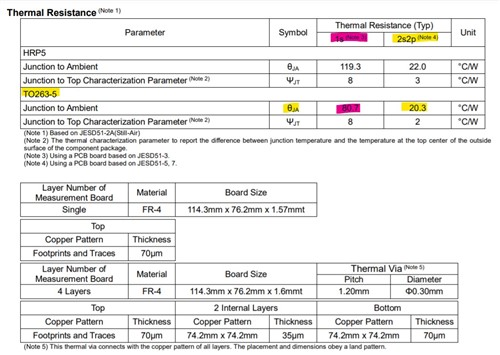Other Parts Discussed in Thread: , LM1084
[1]
For the LM317 (TO-263 3pin) device, Rθja is listed as 38℃/W. Was this parameter taken based on a 1s or 2s2p test board?
For the LM317A (SOT-223 4pin) device, Rθja is listed as 59.6℃/W. Was this parameter taken based on a 1s or 2s2p test board?
I am looking at promoting the LM317 to replace another device, but that device lists, for a similar TO-263 5pin package, an Rθja of 20.3℃/W...
There is another package similar to the SOT-223, but it lists Rθja as 22℃/W...this seems like a large gap and I just want confirmation.
From the datasheet of the device I want to replace:


